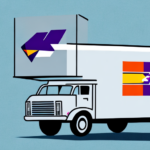Understanding Flat Rate Shipping for Ecommerce Brands
Shipping is a critical component of ecommerce operations, impacting both costs and customer satisfaction. One increasingly popular option is flat rate shipping, which offers simplicity and predictability. In this article, we delve into what flat rate shipping entails, its benefits and challenges, and key considerations for ecommerce businesses looking to implement this strategy.
What is Flat Rate Shipping?
Flat rate shipping is a pricing model where a fixed fee is charged for shipments, regardless of factors like weight, distance, or shipping method. This approach simplifies the checkout process by providing customers with a clear understanding of shipping costs upfront, potentially encouraging larger order sizes and enhancing customer satisfaction.
- Predictable Costs: Customers know exactly how much they will pay for delivery, aiding in budgeting and reducing surprises at checkout.
- Operational Efficiency: Businesses can streamline their shipping processes by avoiding complex calculations based on varying shipment parameters.
- Competitive Pricing: By incorporating shipping costs into product pricing, businesses can offer more competitive overall pricing structures.
Benefits of Flat Rate Shipping
Implementing flat rate shipping can offer several advantages for ecommerce businesses:
- Enhanced Customer Satisfaction: Transparency in shipping costs builds trust and reduces cart abandonment due to unexpected fees.
- Increased Order Value: Customers may feel incentivized to add more items to their cart to maximize the value of the flat rate shipping fee.
- Simplified Logistics: Managing a single shipping rate simplifies inventory management and financial forecasting.
Challenges of Flat Rate Shipping
While flat rate shipping has its benefits, there are also challenges to consider:
- Profit Margins: If not carefully calculated, flat rate shipping can erode profit margins, especially for businesses shipping heavier or bulkier items.
- Limited Flexibility: A one-size-fits-all approach may not accommodate the diverse range of products businesses offer.
- Geographical Constraints: Shipping costs can vary significantly by region, making a flat rate less viable for extensive geographic coverage.
Implementing Flat Rate Shipping: Key Considerations
Before adopting flat rate shipping, businesses should assess several factors to ensure it's the right fit:
- Product Dimensions and Weight: Analyze the average size and weight of products to determine a feasible flat rate that maintains profitability.
- Shipping Destinations: Consider the primary shipping zones and associated costs to set a rate that covers most shipments effectively.
- Customer Expectations: Ensure that the flat rate shipping option aligns with customer expectations for speed and reliability.
- Operational Costs: Factor in packaging, handling, and shipping carrier fees to establish a sustainable flat rate.
Choosing the Right Flat Rate Shipping Options
Ecommerce platforms often offer various flat rate shipping options. Here are some popular choices:
- USPS Flat Rate Boxes: Ideal for businesses shipping heavy items in standard sizes, offering a range of box sizes with a single rate.
- Regional Rate Boxes: Also from USPS, these are priced based on shipping zones, offering cost savings for longer distances.
- Priority Mail Express: Provides expedited delivery for customers needing faster shipping times.
- Flat Rate Envelopes: Suitable for smaller, lighter items, offering the most economical flat rate option.
Choosing the appropriate option depends on the nature of the products and the target customer base.
Best Practices for Flat Rate Shipping Implementation
To successfully implement flat rate shipping, consider the following best practices:
- Accurate Cost Calculation: Ensure that the flat rate covers all associated shipping costs while remaining attractive to customers.
- Clear Communication: Transparently display shipping policies and expected delivery times to manage customer expectations.
- Regular Review: Periodically assess shipping costs and adjust flat rates as necessary to maintain profitability.
- Integration with Ecommerce Platforms: Utilize platform-specific tools to automate and streamline the flat rate shipping process.
Real-World Success Stories
Many ecommerce businesses have successfully leveraged flat rate shipping to enhance their operations. For example, Koa Coffee, a Hawaiian-based coffee retailer, offers free flat rate shipping on orders over $49, resulting in a 23% increase in average order size.
Such strategies demonstrate how flat rate shipping can drive both customer satisfaction and sales growth when implemented thoughtfully.
Future Trends in Ecommerce Shipping
The landscape of ecommerce shipping is evolving, with several trends shaping its future:
- Automation and Robotics: Increased use of technology to streamline fulfillment and delivery processes.
- Sustainable Packaging: Growing emphasis on eco-friendly packaging solutions to reduce environmental impact.
- AI and Machine Learning: Utilizing advanced algorithms to optimize shipping routes and improve delivery efficiency.
Staying abreast of these trends can help businesses adapt and maintain a competitive edge in the market.
Conclusion: Is Flat Rate Shipping Right for Your Business?
Flat rate shipping offers a straightforward and transparent shipping solution that can enhance customer satisfaction and simplify operations. However, it is essential for businesses to conduct a thorough cost-benefit analysis and consider their unique product offerings and customer base before implementation. When executed correctly, flat rate shipping can contribute significantly to a streamlined and profitable ecommerce operation.






















